January Walking Tour: Becoming Frond of Palms
For most horticulturists, winter is the time to prepare new planting schemes and dream of greener pastures. Of course, you could be fortunate enough to be able to work in a conservatory, where you are surrounded by colorful flowers and foliage year round, even in the dead of winter. The Boettcher Memorial Tropical Conservatory is home to a large portion of Denver Botanic Gardens’ Tropical Collection and educates guests about one of the most ecologically diverse climate on earth.
An important plant family housed in the Tropical Conservatory is the palm family (Arecaceae). Palms are prevalently located in tropical regions of the world and are used as a source of food, clothing, and building material. All palms highlighted in this tour are marked and mapped on the Gardens Navigator website.
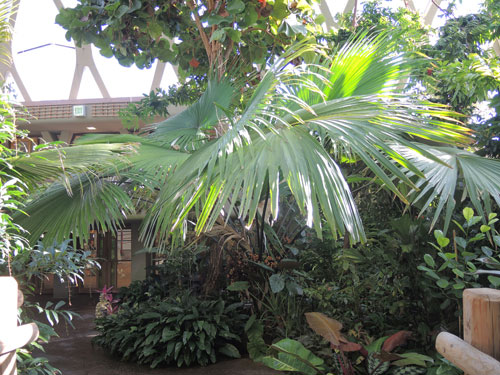
Kerriodoxa elegans – When you first enter the Tropical Conservatory, you are greeted with the most elegant palm Denver Botanic Gardens has. Kerriodoxa elegans stands out despite being an understory palm because it grows large, fan-shaped fronds to catch as much sunlight as it can beneath larger trees in its natural habitat. What makes the foliage also eye-catching is the coloration; the top side of the leaf is a glossy green, underside is a pale white, and the petiole (stem of the leaf) is a dark purple. As you walk by, you’ll also be able to notice the inflorescence and seeds at the base of the plant.
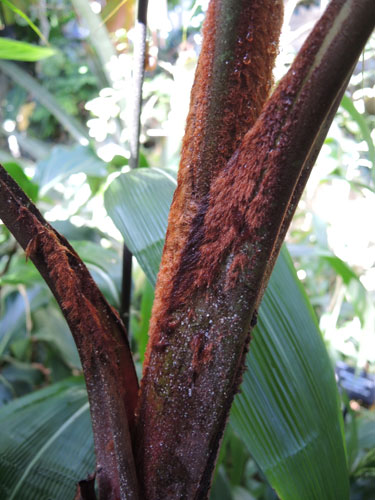
Dypsis lastelliana ‘Darianii’ – In the bed next to the Kerriodoxa elegans, you’ll find a palm with fuzzy copper colored palm sheaths (the base of a palm frond petiole). As the plant continues to grow, the sheaths of older leaves can remain on the plant longer than the leaf itself, so the upper trunk of the palm has both great color and an interesting texture.
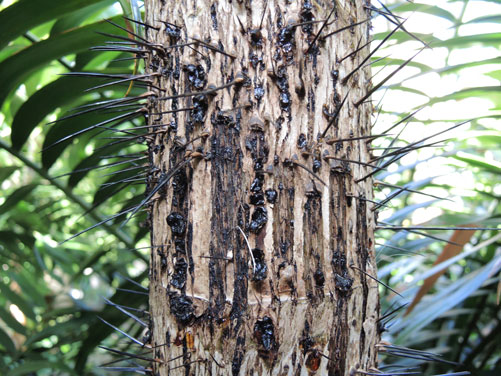
Aiphanes horrida (syn. A. aculeata) – As you walk up the south side path you’ll notice a terrifying stalk covered in grotesque spines. Obviously, this is not a pleasant plant to work with, having spines everywhere including the leaves. To make matters worse, this palm self-seeds constantly. I consider this plant as a “highlight” because unlike the far more pleasant palms we have, this one allows for plenty of character building as you weed these spiny seedlings in the nearby beds.
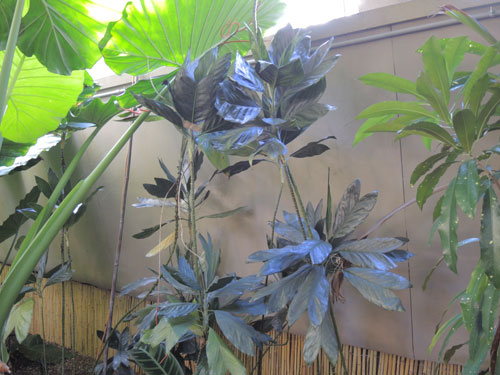
Chamaedorea metallica – As you continue down the south path, you’ll find one of my favorite palms before the stairway to the treehouse. This palm is gaining popularity as a houseplant because of it being a compact size plant that thrives in shade. The fishtail-shaped leaves are in a beautiful grey/blue color. Along the trunks are adventitious roots which allows us to cut and replant a plant if it gets too top-heavy.
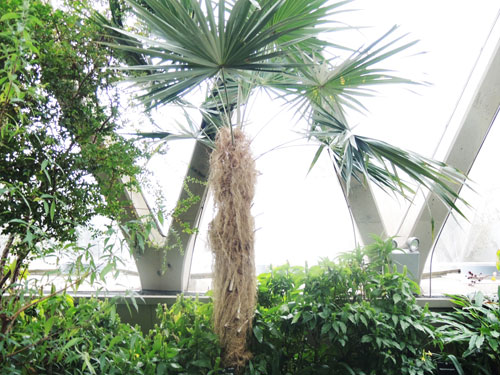
Coccothrinax crinata – You’ll find this bizarre palm in the southwest corner of the Tropical Conservatory. Its leaves and inflorescence aren’t anything that stands out. The real interesting characteristic is its woolly fibers all along the trunk. I don’t like to use plant common names, but the name “old man palm” is very appropriate to use.
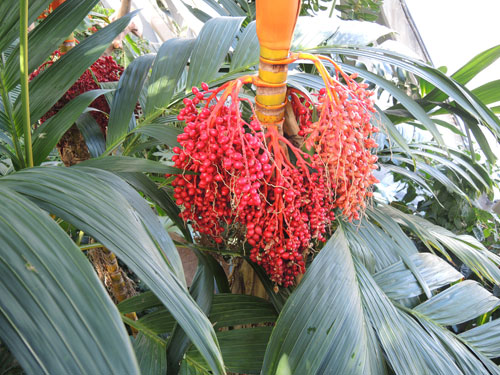
Areca vestiaria – You’ll find this palm on the north side of the Tropical Conservatory, or if you head up the treehouse, you’ll be at the perfect height to admire this standout plant. It has bright red fruit and a colorful crownshaft, adding some color to the canopy level of our Tropical Conservatory.
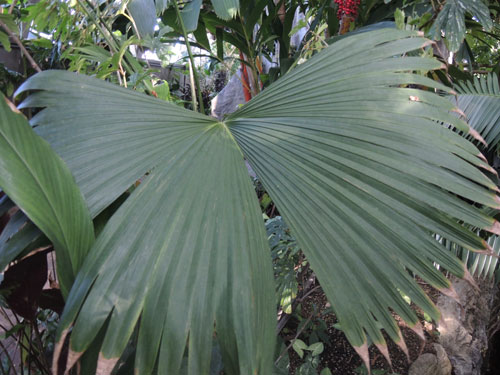
Carludovica palmata – You’ll find this along the Tropical Conservatory north path, next to the Areca vestiaria. This palm was part of Denver Botanic Garden’s Tropical Collection when the conservatory first opened in 1966. The leaves of the plant are used to make Panama hats.
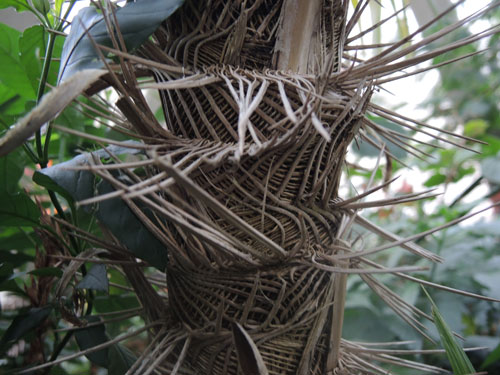
Zombia antillarum – located in the northwest corner, Zombia antillarum is an endangered palm native to Hispaniola. This palm has spines arranged in an interesting manner. Unlike the spiny Aiphanes horrida, the spines on Zombia palms are only found on the trunk.
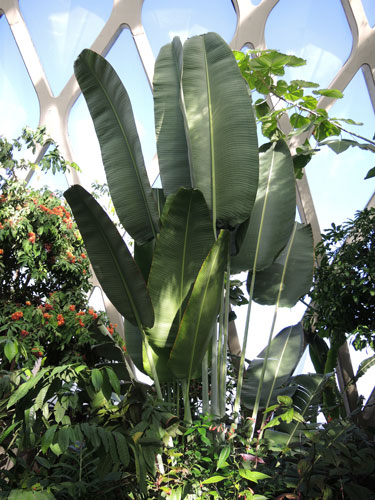
Ravenala madagascariensis – Despite having the common name of “traveler’s palm,” Ravenala madagascariensis is not a palm. It is actually in the bird-of-paradise family (Strelitziaceae). It’s a beautiful plant with 5’ broad leaf blades in a fan arrangement and white bird-of-paradise flowers. It’s a good lesson to not be reliant on common names, as they easily mislead people into wrongly identifying plants.
Add new comment